Volleyball is a dynamic and captivating sport that captivates audiences worldwide. At the heart of this thrilling game lies a crucial offensive play known as the “kill.”
A kill in volleyball refers to a powerful, precise shot that is directed onto the opponent’s court, resulting in a point scored for the attacking team.
Mastering the art of the kill is essential for any volleyball player or team aspiring to dominate the game.
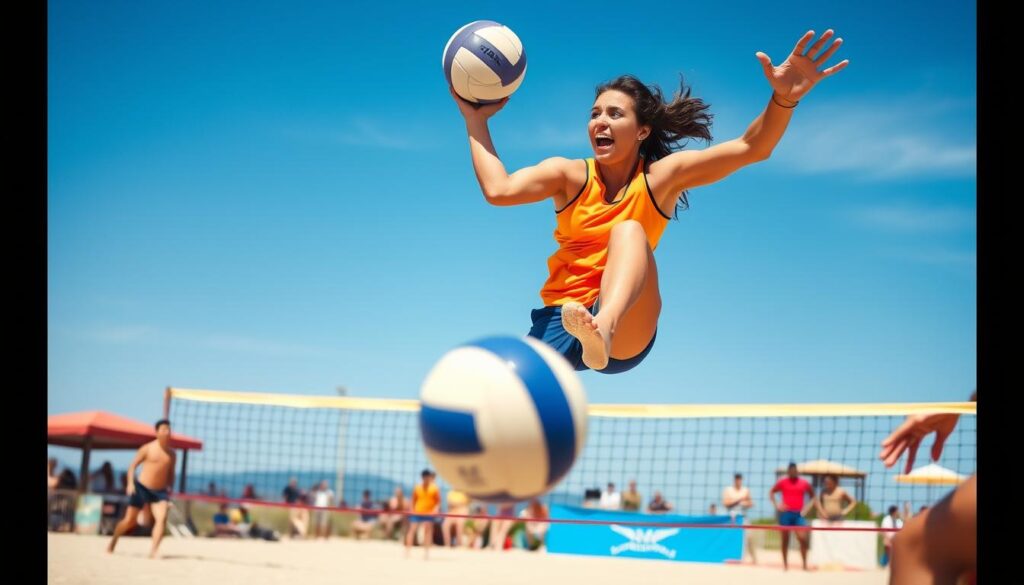
Key Takeaways
- A kill in volleyball is a powerful, precise shot that lands on the opponent’s court, earning the attacking team a point.
- Kills are a crucial component of offensive strategy in volleyball, as they can quickly shift the momentum of the game.
- Understanding the scoring system and terminology related to kills is essential for players and fans to fully appreciate the nuances of the sport.
- Effective kills require a combination of skill, timing, and strategic decision-making by the attacking player.
- Maximizing kills can be the difference between winning and losing a volleyball match.
The Basics of Volleyball Scoring
Knowing the scoring basics is key to enjoying volleyball. The volleyball scoring rules make the game fair and exciting for everyone. Let’s explore the rally scoring system and the points and terms used.
Rally Scoring System
Volleyball uses a rally scoring system. This means a point is scored every rally, no matter who served. It makes the game fast and thrilling, as every play can change the score.
The team that hits 25 points first wins a set. The team that wins the most sets wins the game.
Points and Terminology
In how to score points in volleyball, there are important terms to know:
- Kill: A successful attack that results in a point for the attacking team.
- Ace: A serve that directly results in a point for the serving team.
- Block: A defensive play where a player(s) successfully stops the opposing team’s attack.
- Sideout: When the receiving team wins the rally and earns the right to serve.
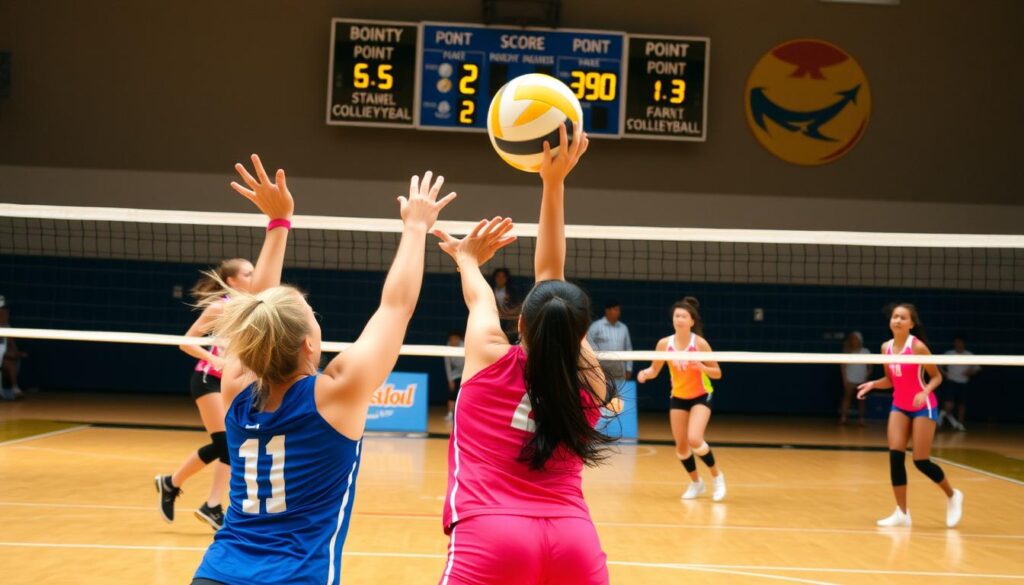
What Is a Kill in Volleyball?
A “kill” is a powerful shot that scores a point in volleyball. It’s when a team’s attack lands the ball on the opponent’s side. This play is thrilling and key to the game.
A kill shot, or “spike,” is when a player hits the ball hard into the opponent’s court. It’s usually at a sharp angle, making it hard for the other team to return. The aim is to overwhelm the defenders and score fast.
Kills can happen in many ways on the court. They might come from a player spiking the ball after a set. Or from a well-timed tip or dump, where the ball is gently placed over the net, surprising the opponents.
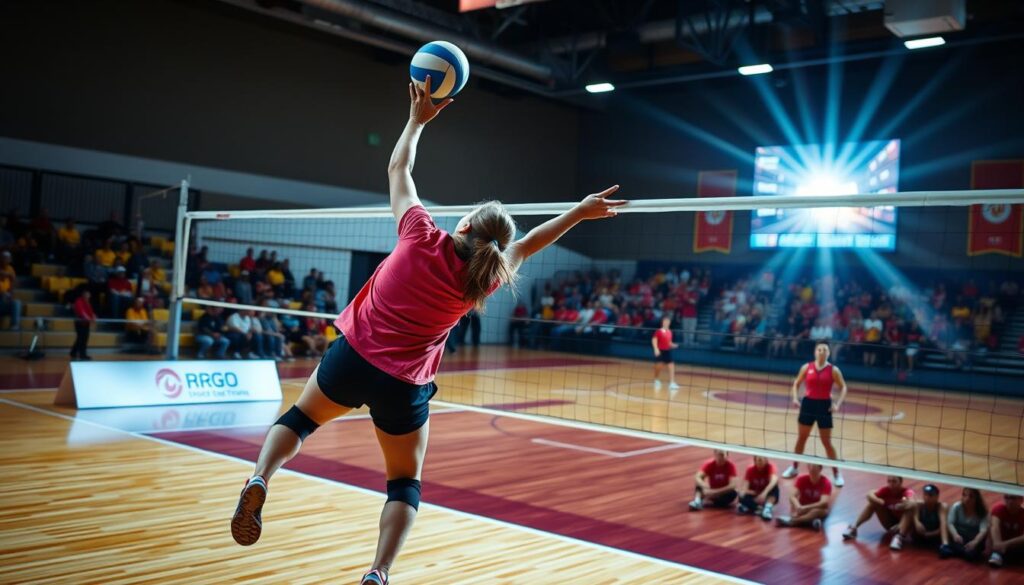
Importance of Kills in Volleyball
Kills are key to a winning volleyball strategy. They score points and change the game’s momentum. Players and coaches need to know how to use kills effectively.
Offensive Strategy
Kills are crucial for a team’s offense. They score points and can change the game’s direction. A good kill can demoralize the other team and open new scoring chances.
A well-executed kill can do several things:
- Directly score a point for your team
- Put pressure on the opposing team’s defense
- Disrupt the opposing team’s offensive rhythm
- Boost your team’s confidence and momentum
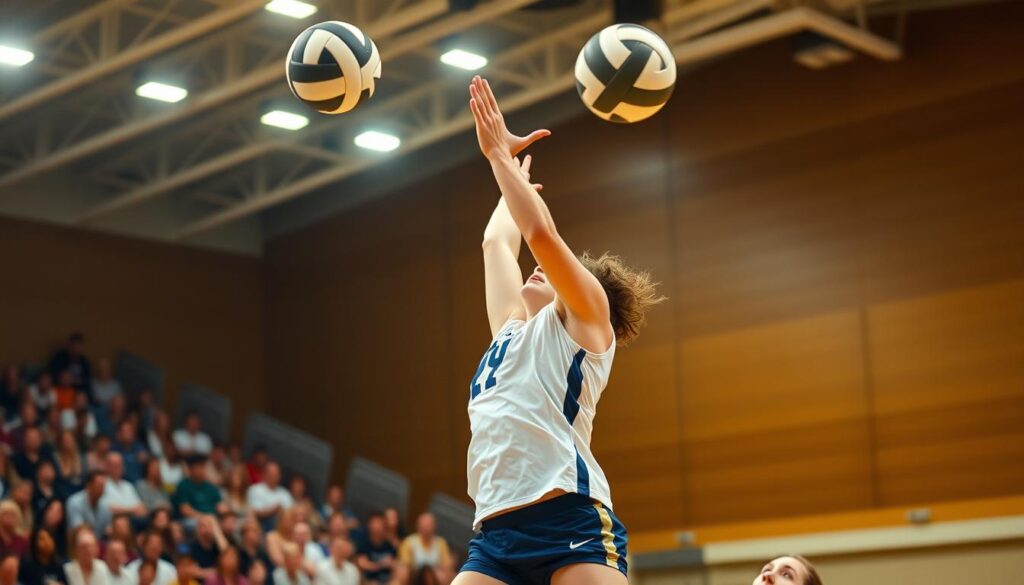
Skilled players and teams use kills to control the game. They outmaneuver opponents and win. Mastering the kill is essential for success on the court.
Techniques for Executing Successful Kills
Getting kills is key for any volleyball player. It involves body positioning, timing, and power. Let’s look at some strategies for successful kills.
Develop Proper Approach and Timing
A good kill starts with a quick approach to the net. Build a fast, explosive approach to jump at the right time. Match your steps with the setter’s to jump perfectly and hit hard.
Utilize Proper Swing Mechanics
Good swing mechanics are vital for powerful kills. Use your core, extend your arm fully, and snap your wrist. This adds spin and power. Try different swings to find what works for you.
Develop Deceptive Hitting Strategies
Be unpredictable to keep the other team guessing. Mix up your shots, feint, or hide your plans. This unpredictability can surprise the defense and open up more kill chances.
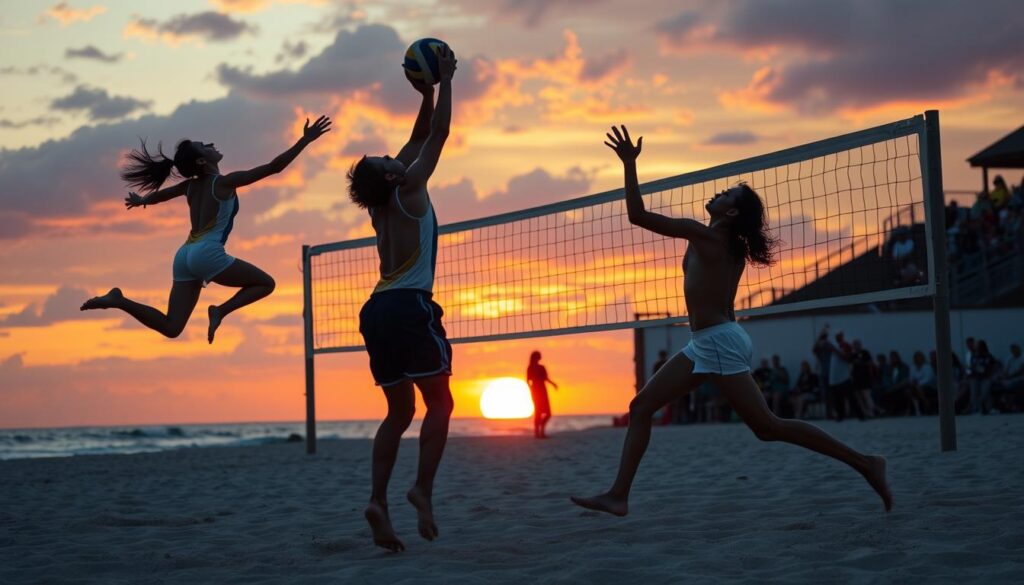
Practice, Practice, Practice
Mastering the kill takes lots of practice. Spend time improving your technique and learning when to hit hard. With hard work, you’ll become a strong attacker.
Use these techniques to improve your game. Remember, kills are about precision, timing, and outsmarting opponents. Follow these tips, and you’ll be spiking your way to victory soon.
Conclusion
In the world of volleyball, kills are very important. A kill happens when a player hits the ball hard over the net, scoring a point. Learning how to make successful kills is key for any team wanting to win.
We’ve looked at how kills work in scoring and their role in the offense. We’ve also covered the techniques needed to do them well. Knowing about kills helps anyone, whether you’re experienced or new to volleyball.
By the end of this, you should appreciate the skill and strategy needed for kills. Understanding kills helps you play better and support your team. Now, you can use this knowledge to improve your game and help your team succeed.
FAQ
What is a kill in volleyball?
In volleyball, a kill is when a team hits the ball so hard the other team can’t return it. This makes the attacking team score a point.
How does the rally scoring system work in volleyball?
Volleyball uses a rally scoring system. A point is given to a team after each rally, no matter who served. The game keeps going until one team hits 25 points.
What are the key points and terminology used in volleyball scoring?
Important terms in volleyball scoring include points, sets, matches, aces, blocks, and digs. These terms help show how well a team is doing and their chances of winning.
Why are kills important in volleyball?
Kills are key in volleyball because they help teams score points. A good kill can also upset the other team’s plans, giving the attackers an edge.
What techniques are used to execute a successful kill in volleyball?
To hit a successful kill, players need to position their body right, time their swing, and use strong power. They should aim well and guess the other team’s defense.



